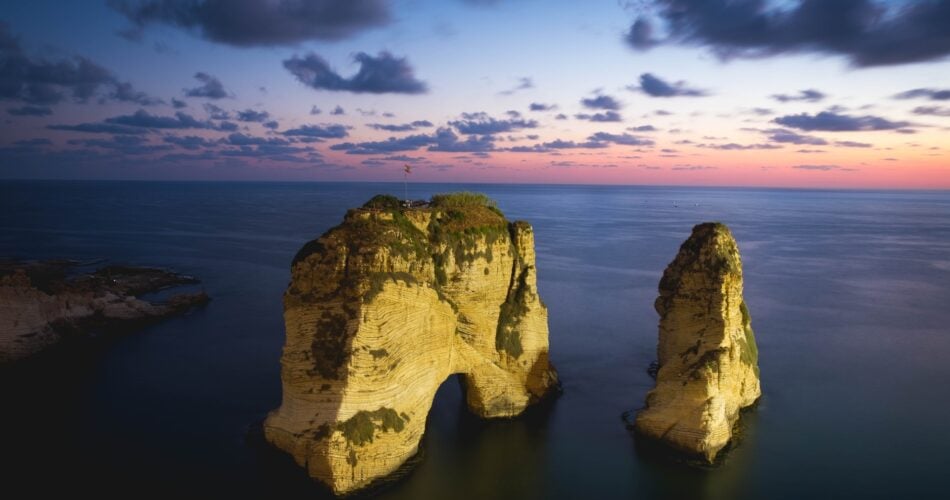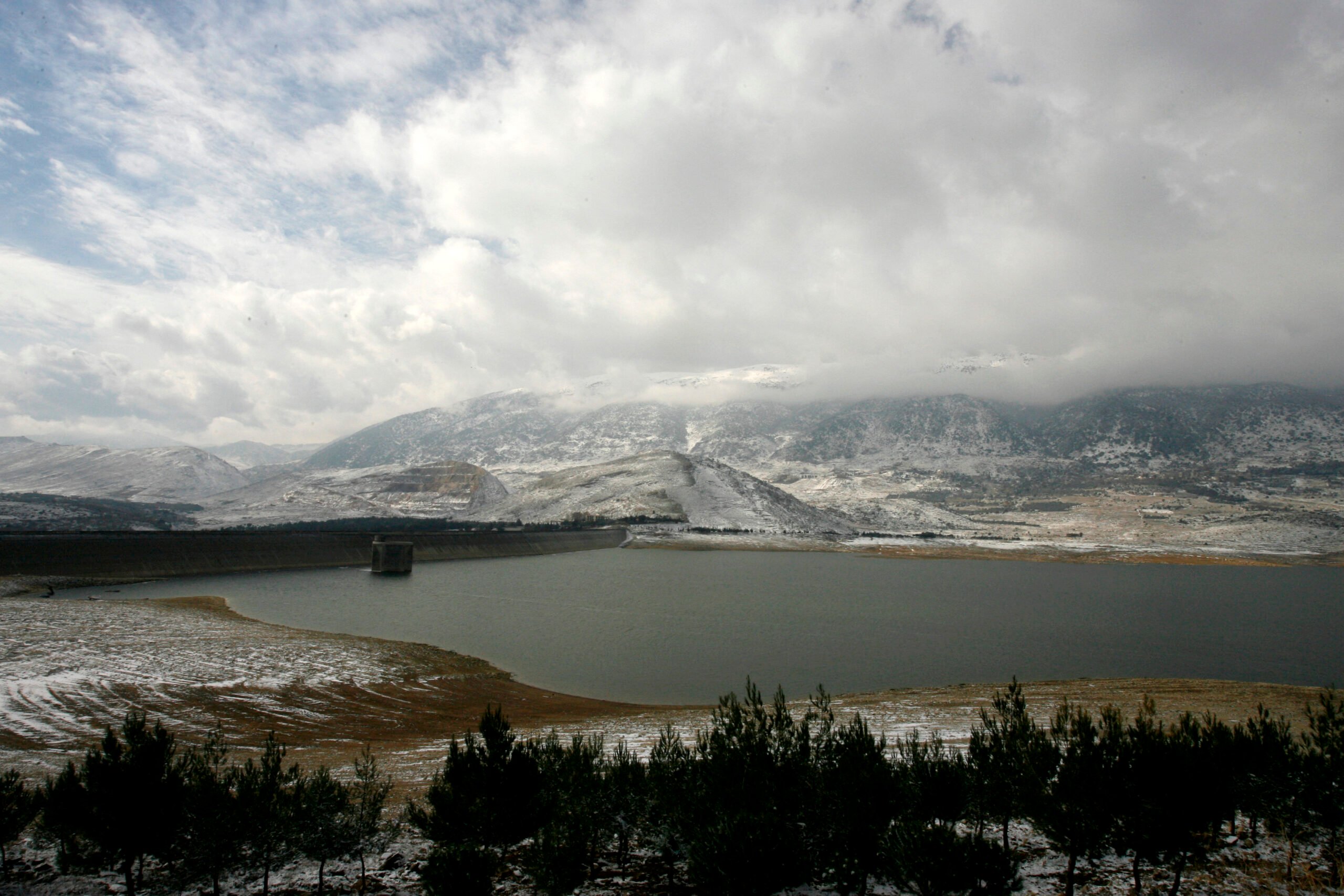
Contributors:
Author: Amani Matar, is currently working in the Netherlands on water-related projects for the MENA region. She holds a MSc in Water Management and Governance from IHE Delft, and a Bachelor’s degree in Geology from the American University of Beirut. She worked for over six years in a consulting firm in Lebanon with projects in the MENA region where she gained experience on water-related issues, challenges, and opportunities in the region.
Peer review: Dr. Nadim Farajalla, Director of the Climate Change and Environment Program at the Issam Fares Institute for Public Policy and International Affairs – American University of Beirut.
Introduction
In a region already facing the impacts of rapid growth, regional instability and climate change, water scarcity is putting extra pressure on countries across the Middle East.[1] The water crisis has been identified as the greatest threat the region is least prepared for, greater even than political instability and unemployment.[2]
Lebanon is often described as water-rich, mostly because water is visible everywhere. However, a closer look at supply and demand shows a different reality. Water availability per capita is actually below the threshold of water poverty, which is broadly defined as not having access to sufficient water of an adequate quality to meet basic needs.[6]
Lebanon’s surface waters are already highly exploited, and its groundwater resources are overexploited in most regions. The water issue in Lebanon has been described as a paradox: ‘water abundant yet scarce’.[3] This mainly refers to unsustainable management of the water resources coupled with weak governance that have put pressure on these resources, especially groundwater.[4]
Geography and climate
Lebanon is located on the eastern coast of the Mediterranean Sea. The country’s dominant geomorphologic fabric consists of a narrow coast and two north-north-east/south-south-west trending mountain ranges that are separated by the narrow Bekaa plain.
Most of these features were shaped by tectonic activities along the tectonic plate boundary of the Dead Sea Transform Fault (DSTF) (map 1). These tectonic deformations have shaped the country’s geology, exposed and fractured rocks dating back to the Jurassic period, and had a major controlling effect on the hydrogeological regime.[4]
Lebanon is characterized by a Mediterranean climate, with hot, dry summers and cool, rainy winters. The average annual temperature is around 15°C.[5] Recent analysed data suggests that the average annual temperature varies as follows, depending on different altitudes: coastal zone (<250 m): 24°C; plateau (250-750 m): 22.5°C; moderately elevated areas (750-1,500 m): 19.5°C; heights (1,500-2,500 m): 18.5°C; and crests (>2,500): 14°C.[6]
Precipitation includes rainfall and snow and is considered the country’s main water source, contributing to its water renewability. Due to the topographic features, the rainfall varies over short distances between the coast, mountains and inland areas, from between 650 millimetres (mm) and 1,500 (mm).
Solid precipitation (snow) is another important aspect of precipitation and a key source of surface and groundwater. Lebanon is the only country in the Middle East where the snow lasts for several months in the mountains and covers an area of around 2,250-2,500 square kilometres (km2).[6]
According to measured data series, most of the rainfall occurs between November and February and the least between May and August. It is important to note that several contradictory estimates for rainfall exist, varying between 800 mm and 982 mm.
However, based on a recent calculation for data series over six decades,[7] the average rainfall is estimated to be 910 mm, mainly between October and April, and is distributed over six climatic zones (coastal ribbon, plateau, western heights, Bekaa plain north, Bekaa plain south and eastern heights).
Population (growth since 1950; projection for 2050)
According to the Central Administration of Statistics, Lebanon’s population in 2018 was around 4.8 million.[8] Two years later, data published by The World Bank estimated the population to be around 6.8 million,[9] composed of around 5.48 million Lebanese and 1.35 million refugees.[10]
However, United Nations figures reported by the European Commission put the total number of refugees at 1.5 million.[11] Figure 2 shows the population between 1960 and 2020. It is estimated that 89% of the population lives in urban areas.
The three main cites are Beirut (capital city), Tripoli and Sidon.[12] The annual population growth rate is declining, dropping into negative numbers (-44%) in 2020, its lowest value since 1970.
This is mainly linked to the political situation in the country, which has led to a significant fluctuation in the growth rate, and is not expected to change any time soon.[13] Indeed, the population is expected to drop to around 6.2 million in 2030 before it starts increasing again, reaching around 6.5 million in 2050.[13]
Economy (current GDP; projections; main sectors and their share of GDP)
The Lebanese economy has been unstable for the last 20 years. The main period of economic growth was between 2006 and 2010, with the gross domestic product (GDP) growing by an average of 9.2%.
Between 2010 and 2017, GDP growth was static at 1.3%. In the years since, the economic situation has declined, with GDP growth dropping to around -7% in 2019 and -21% in 2020.[5] [14] For the past two years, Lebanon has faced several crises, starting with an economic and financial crisis, followed by COVID-19 and, lastly, the Beirut Port explosion on 4 August 2020.
Beyond the human tragedy, the latter had national implications, despite its geographical concentration. These crises have added to Lebanon’s long-term structural vulnerabilities, which include low-quality infrastructure, a dysfunctional electricity sector, water supply shortages, limited solid waste and wastewater management as well as weak public financial management, macroeconomic imbalances and deteriorating social indicators.[15]
In a review, The World Bank compared Lebanon’s economic and financial crisis to crises that are usually linked to conflict and war. Lebanon’s GDP dropped from about $55 billion in 2018 to an estimated $20.5 billion in 2021, while real GDP per capita fell by 37.1%. The inflation rate averaged 131.9% for the first six month of 2021.[16]

[1] The World Bank, 2017. Beyond Scarcity: Water Security in the Middle East and North Africa.
[2] World Economic Forum, 2015. Global Risks 2015. 10th Edition. Insight Report. Geneva: World Economic Forum.
[3] Blom Invest Bank, 2017. Lebanon’s Paradox: Water is Abundant yet Scarce. Blog.
[4] UNDP (United Nations Development Programme), 2014. Assessment of Groundwater Resources of Lebanon.
[5] MoE (Ministry of Environment), 2020. Lebanon State of the Environment and Future Outlook: Turning the Crises into Opportunities (SoER 2020). With UNHCR, UNICEF and UNDP.
[6] Shaban, A, 2017. Water Resources of Lebanon (chapter 2). Springer Cham.
[7] Shaban A, Houhou, R, 2015. ‘Drought or humidity oscillations? The case of coastal zone of Lebanon.’ Journal of Hydrology 529: 1768-1775.
[8] Central Administration of Statistics, n.d. Population statistics.
[9] The World Bank Data, n.d. Population, total – Lebanon.
[10] The World Bank Data, n.d. Refugee population by country or territory of asylum – Lebanon.
[11] European Commission, n.d. European Civil Protection and Humanitarian Aid Operations – Lebanon factsheet.
[12] Middle East Policy Council, n.d. TeachMidEast – Lebanon.
[13] World Population Review, 2021. Lebanon Population (Live).
[14] The World Bank Data, n.d. GDP growth (annual %) – Lebanon.
[15] The World Bank, n.d. Lebanon – Overview.
[16] The World Bank, n.d. Lebanon’s Economic Update – October 2021.

